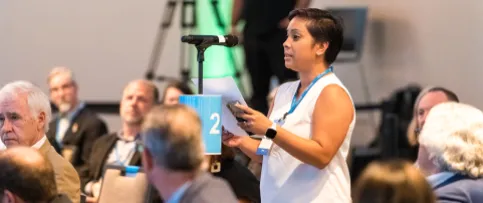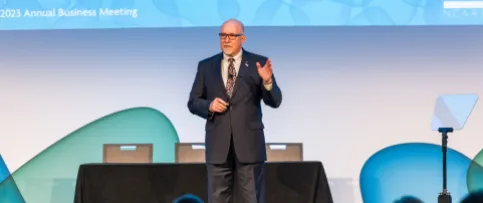Montana architect Bayliss Ward, NCARB, AIA, was inaugurated as NCARB’s FY23 president at the 2022 Annual Business Meeting in June. Ward’s focus during his year as president will be strengthening the licensing advisors community, while also exploring the future of licensure and competency.
Q: When did you realize you wanted to become an architect?
I have always been into art, taking interest specifically in drawing and photography. Seeing how an environment is built and can thrive has also always piqued my interest. I took architecture seriously after high school, and the rest has been history.
Q: How was your experience at Montana State University? How do you think it helped ignite your architectural path?
My parents had close friends who were architects in Indianapolis that recommended Montana State University (MSU). Our family also had roots in Montana after previously living in Billings. The transition overall was simple, and it was a great school. I learned so much in their design program throughout my four years.
During my time at MSU, I had the opportunity to intern for RTKL, a firm in Florida. I gained so many skills there and truly enjoyed my experience. There, I was exposed to projects that most interns typically do not have the chance to work on. I was offered my first full-time position after my internship ended, and after a while, I had the opportunity to run some projects and had people reporting to me.
Q: Why was it important for you to get licensed? What is the value of an architecture license?
It was important for me to get licensed because it was a life goal of mine. After five years at school, getting licensed was the pinnacle of my college career. It was a huge accomplishment for me. To this day, I can recall feeling nervous about opening the letter with my ARE results and the sense of relief and excitement I felt while reading them. So I understand completely what the candidates go through professionally and emotionally; it’s a hard process and takes a lot to get through.
I think the flexibility that candidates now have with testing is essential because life has changed drastically since I took the exam. I believe being licensed is still in high regard, with many candidates committing the time and work to achieve it. I encourage all candidates just to keep pushing; the process is not an easy one, but it is worth it. To be able to practice fully and enjoy the entire scope of architecture is a privilege I push all candidates to achieve.
The value of a license to me is simply being able to do what I love. It gives me the opportunity to make dreams come true for others, which is something that is priceless to me. The relationships I’ve built with clients throughout the years are ones that I cherish—with many of us being good friends today, 30 years later. Clients who still tell me how pleased they are with the projects that I have worked on for them are what keep me going every day. Starting out in Bozeman, I never thought I’d practice outside of Montana. But I am currently licensed in seven states. I work on projects all over the country, and that is something I never imagined for myself.
Q: What does an architect do, and what would you want the public to know about the role of an architect?
I want the public to understand that architecture is more than just simple sketches—there is a lot more that the job entails. We are not only designing but also ensuring functionality, maintaining relationships with clients, leading teams to deliver client needs, and so much more. Most importantly, architects are working day in and out to ensure that the public is protected. We follow international building codes, as well as many others such as NFPA codes, to ensure that the building’s structural, mechanical, electrical, and basic functional needs are met.
Q: What do you love most about architecture?
What I love the most about architecture is making dreams come true. From residential to commercial projects, achieving the client’s goals is what I take pride in. Pulling off a design and structure that works well for the clients is just the best feeling. It’s hard to duplicate.
I started my own firm to be able to practice architecture my own way—founded in ethics and values.


